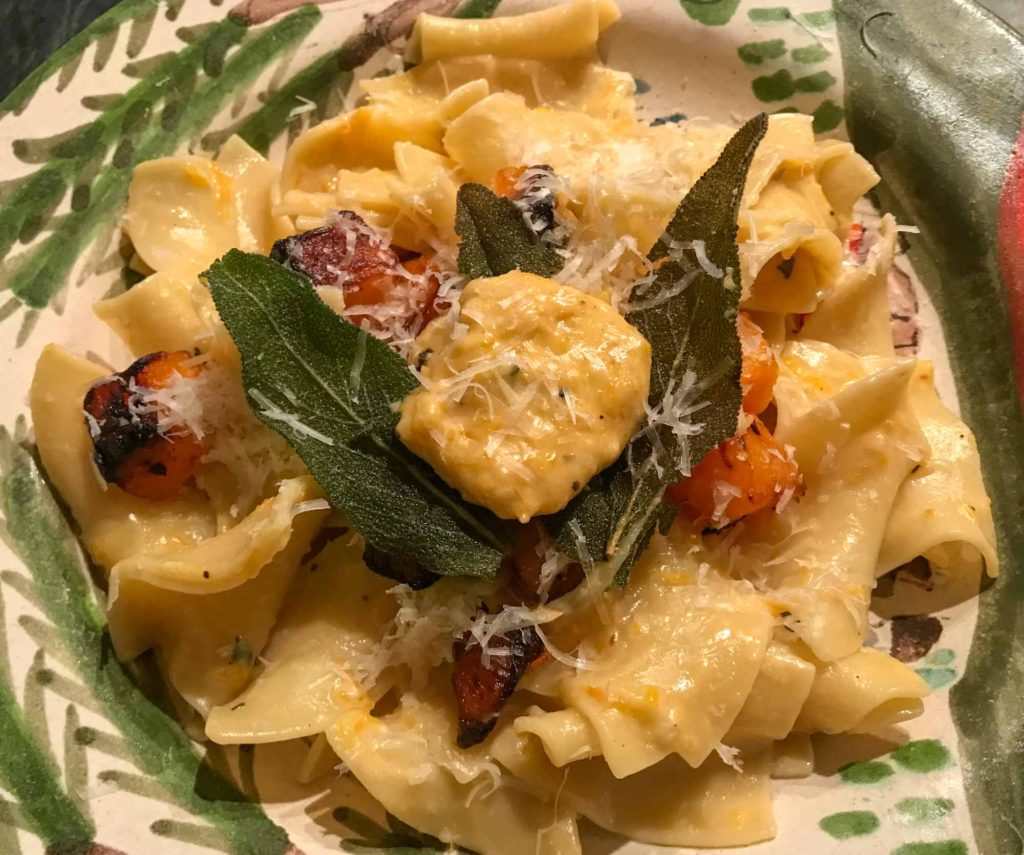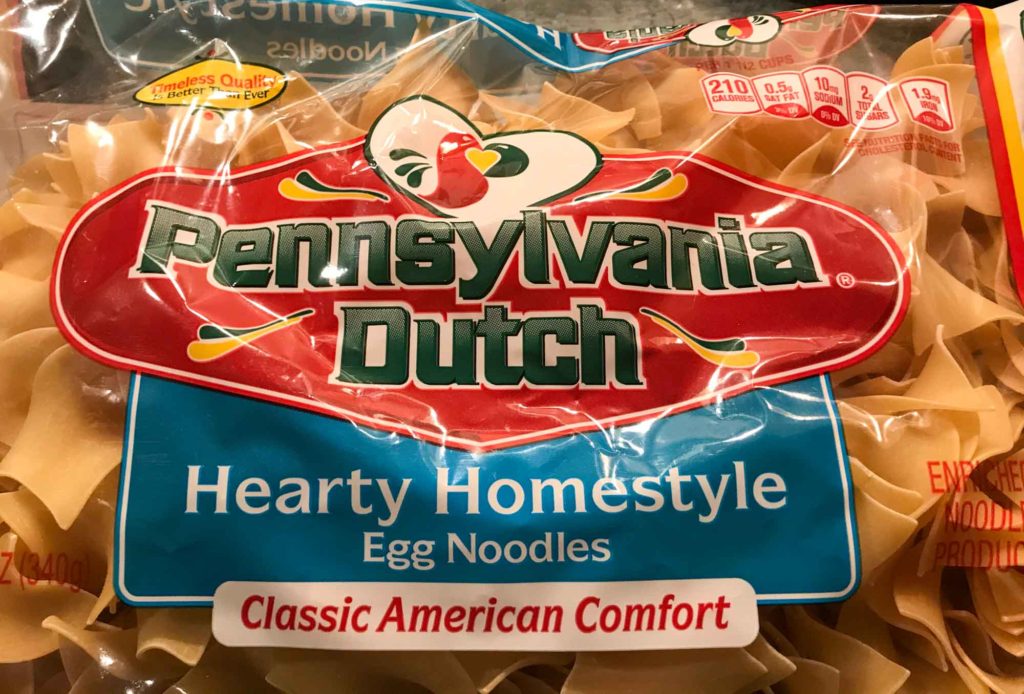
I’m a food optimist. I assume anything quickly and roughly made will be delicious. This includes, especially, burritos made on a portable gas stove at a car wash in Los Angeles, bags of boiled peanuts bought along Route 1 in Georgia, and any truck stop fudge with a xeroxed label.
Though I generally enjoy measuring and tarting things up, it does feel like a violation of the sprezzatura principle – the notion that the greatest art should be effortless. Italians take this concept to the point where you can buy your own misshapen leftovers. Pasta maltagliati – badly made pasta – is broadly available in commercial versions, including some that mimic the irregular curled edges of lasagna trimmed from a pan.
What brought this to mind was a spectacular ricotta I had just made with raw milk from my neighborhood dairy farm (yes, I live in Green Acres). It wanted to be put in ravioli, but I didn’t want to put myself through ravioli. I decided the ricotta would shine more brightly on the outside of the pasta, rather than be tucked into nerdy little squares. I wanted a subverted, exploded pumpkin ravioli. Silver Spoon, the Italian Joy of Cooking, led me to maltagliati con la zucca, which became my culinary springboard.
Of course, making your own badly made pasta also violates sprezzatura. It has to occur naturally. And what could be more natural than to buy the nearest equivalent, which is Pennsylvania Dutch Hearty Homestyle Egg Noodles. If this seems too gauche, note that it says “Timeless Quality” and “Classic American Comfort” right on the package. And if you still doubt my suggestion, we should progress to the next word in our Italian vocabulary lesson, which is menefreghismo. Why should you care what anyone thinks? This is a seriously good pasta for this recipe.
(Historical note: if you followed the link above, you’ll notice it touts Simon Cowell as the archetypal menefreghista. This is just wrong. There is no single Italian word for Simon Cowell, though pidocchio and mascalzone come close. Anyway – the classical menefreghista is and always will be Dean Martin.)
Recipe: Exploded Butternut Ravioli
An inside-out butternut ravioli with sage and ricotta.
-Full Post-

Heat oil to medium hot in a large saute pan. Let's suppose you have a typical 1/2 ounce packet of fresh sage, which will be enough to make this dish for two. Fry 5 or 6 leaves per person until crisp, and remove to a paper towel. Finely chop the remaining 1/4 ounce of fresh sage, along with the garlic.
Spoon off a tablespoon or two of the sage oil and reserve as a final drizzle. Fry the butternut cubes in the remaining oil until well browned and just tender, about six or eight minutes. Reserve about a half cup of the nicer cubes as a garnish, then add the sage and garlic mixture to the pan and saute another minute or two. Mash up with the back of a wooden spoon, adding the sherry or water, if needed, to form a rough paste. Keep warm.
Boil the noodles in salted water as indicated, until al dente. Using the original saucepan, whisk in most of the grated romano, all of the ricotta, and about 2 T of pasta water. Grate in the nutmeg and the pepper, and taste for seasoning - you'll probably need another half teaspoon of salt. Reserve a few tablespoons of the finished sauce.
Add the drained pasta to the pan, toss gently and cook another minute, to let the flavors sink in. Plate up, garnishing with the remaining butternut cubes, the fried whole sage leaves, a final dollop of sauce and a sprinkling of romano.

This is simple and fast to make for two, especially if you use peeled or pre-cubed butternut squash. If you use fresh sage as encouraged and directed it's also stupid elegant - a humblebrag, what with the badly made pasta. Actually, I don't know that I'd do this dish at all without the fresh sage, and certainly not without a good ricotta. I'd probably feel so sorry for myself that I'd add bacon.
About that badly made pasta - pasta maltagliati is a real thing, and references the scraps left over from making ravioli, lasagna, or other types of pasta sheets. The Pennsylvania Dutch Hearty Homestyle noodles I use are as close as they need to be, according to the unwritten laws of sprezzatura.

Ingredients
Directions
Heat oil to medium hot in a large saute pan. Let's suppose you have a typical 1/2 ounce packet of fresh sage, which will be enough to make this dish for two. Fry 5 or 6 leaves per person until crisp, and remove to a paper towel. Finely chop the remaining 1/4 ounce of fresh sage, along with the garlic.
Spoon off a tablespoon or two of the sage oil and reserve as a final drizzle. Fry the butternut cubes in the remaining oil until well browned and just tender, about six or eight minutes. Reserve about a half cup of the nicer cubes as a garnish, then add the sage and garlic mixture to the pan and saute another minute or two. Mash up with the back of a wooden spoon, adding the sherry or water, if needed, to form a rough paste. Keep warm.
Boil the noodles in salted water as indicated, until al dente. Using the original saucepan, whisk in most of the grated romano, all of the ricotta, and about 2 T of pasta water. Grate in the nutmeg and the pepper, and taste for seasoning - you'll probably need another half teaspoon of salt. Reserve a few tablespoons of the finished sauce.
Add the drained pasta to the pan, toss gently and cook another minute, to let the flavors sink in. Plate up, garnishing with the remaining butternut cubes, the fried whole sage leaves, a final dollop of sauce and a sprinkling of romano.

This is simple and fast to make for two, especially if you use peeled or pre-cubed butternut squash. If you use fresh sage as encouraged and directed it's also stupid elegant - a humblebrag, what with the badly made pasta. Actually, I don't know that I'd do this dish at all without the fresh sage, and certainly not without a good ricotta. I'd probably feel so sorry for myself that I'd add bacon.
About that badly made pasta - pasta maltagliati is a real thing, and references the scraps left over from making ravioli, lasagna, or other types of pasta sheets. The Pennsylvania Dutch Hearty Homestyle noodles I use are as close as they need to be, according to the unwritten laws of sprezzatura.

